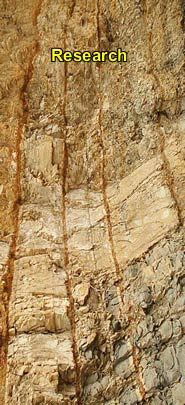
|
 |
||||
When creating a paleontological display, the amalgamation of research from many different fields is required.
A display should be emphasizing one main image or object and must be visually appealing. Trying to include all these factors with research can be a challenge. The paleontological displays at the Morden and District Museum are all scientific displays. Research from paleontologists, geologists and biologists contribute the content of the displays.
Research begins within the museum. Information of the specimen being displayed starts with information from the collection records. Locality, age, size, type etc. are all forms of information important to the specimen. Information for a display must be accurate and up to date for that time. Recent publications from scientific journals, papers and thesis’ from graduate students are researched providing valuable & up to date information. Today the Internet makes resources more accessible.
Theories are constantly changing in science and one can not solely rely on one source for information. For example one paleontologist may believe mosasaurs branched off to today’s Komodo dragon while another may believe they branched off to provide the lineage to snakes.
Almost everything in a display, except for artistic impression is based on research. The position the organism is placed in and the environment created around it, is all based on where the fossil was found and how the bones articulate (connect). In diorama scenes even the possible prey found is known from research. For example a mosasaur skeleton was found with another mosasaur skeleton inside of a different species, indicating it wasn’t giving birth but was feeding upon it.